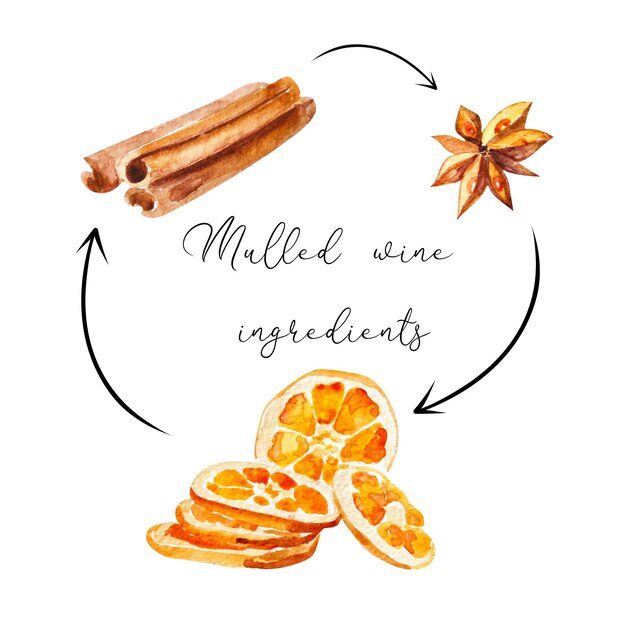Learn the Best Techniques for How to Chopping Cilantro Like a Pro and Elevate Your Culinary Skills
Whether you’re a seasoned cook or just starting out in the kitchen, knowing how to properly chop cilantro can make all the difference in your dishes. Cilantro, also known as coriander leaves, adds a fresh and vibrant flavor to a variety of cuisines, including Mexican, Indian, and Thai. However, if not chopped correctly, it can become mushy or lose its flavor. That’s why we’ve created this step-by-step guide to help you master the art of chopping cilantro.
The first step in chopping cilantro is to gather your ingredients and tools. You will need fresh cilantro, a sharp knife, a cutting board, and a bowl or plate to hold the chopped cilantro. It’s important to use a sharp knife to prevent bruising or tearing the leaves.
Next, rinse the cilantro under cold water and pat it dry with a paper towel. This step is necessary to remove any dirt or debris that may be clinging to the leaves. Once the cilantro is dry, separate the leaves from the stems. While the stems are edible, they have a stronger flavor and a more fibrous texture. If desired, you can save the stems for use in soups or stocks.
Once the leaves are separated, gather them into a tight bundle and hold them together firmly with one hand. Use your other hand to grip the knife and bring it down in a rocking motion, starting at the tip of the leaves and moving towards the stem end. This chopping motion will help to release the fragrance and flavor of the cilantro. Repeat this motion until the cilantro is finely chopped to your desired consistency.
Now that you know the proper technique for chopping cilantro, you can confidently add it to your favorite recipes. Whether you’re making guacamole, salsa, or curry, the fresh and vibrant flavors of chopped cilantro will take your dishes to the next level. So grab your knives and get chopping!
Why Chopping Cilantro is Important
Chopping cilantro is an essential step in many recipes that call for this vibrant herb. It not only enhances the flavor and aroma of dishes but also improves the overall presentation.
When cilantro leaves are finely chopped, they release their natural oils, which contain a variety of flavorful compounds. These oils infuse the dish with a fresh and bright taste that is distinctive to cilantro. Whether you’re making salsa, guacamole, or curry, chopping cilantro will ensure that each bite bursts with flavor.
Additionally, chopping cilantro helps to distribute its flavor evenly throughout a dish. By cutting it into smaller pieces, you can ensure that every bite has a balanced taste. This is particularly important when using cilantro as a garnish, as it allows for a more cohesive and enjoyable dining experience.
Moreover, chopping cilantro can also affect the texture of a dish. By finely chopping the leaves, you can create a more delicate and refined mouthfeel, which can be especially desirable in soups, salads, and other dishes where cilantro is a prominent ingredient.
Lastly, chopping cilantro is important for aesthetic reasons. The vibrant green color of chopped cilantro adds visual appeal to any dish, making it look more appetizing and inviting. Whether you’re serving a casual weeknight meal or hosting a special occasion, a sprinkle of freshly chopped cilantro can elevate the presentation and impress your guests.
In conclusion, chopping cilantro is a crucial step in cooking that enhances flavor, ensures even distribution, improves texture, and adds visual appeal to dishes. By mastering the art of chopping cilantro, you can elevate your culinary skills and create memorable dishes that are as pleasing to the palate as they are to the eye.
Understanding the Benefits of Freshly Chopped Cilantro
Freshly chopped cilantro is not only a flavorful addition to your dishes, but it also offers several health benefits. This aromatic herb is rich in essential nutrients and antioxidants, making it a valuable addition to your diet.
Nutritional Value
Cilantro is packed with vitamins and minerals that contribute to a healthy diet. It is a good source of vitamin A, vitamin C, vitamin K, and potassium. These nutrients support immune function, promote healthy skin, and help maintain proper blood pressure levels.
Antioxidant Properties
Cilantro contains several antioxidants, including quercetin, kaempferol, and beta-carotene. These compounds help protect the body against oxidative stress caused by harmful free radicals. Antioxidants play a crucial role in reducing inflammation and preventing chronic diseases such as heart disease and certain types of cancer.
Digestive Health
Cilantro is known for its digestive benefits. It contains natural enzymes that aid in digestion and can help alleviate symptoms of indigestion, bloating, and stomach cramps. The fiber content in cilantro also promotes healthy digestion by supporting regular bowel movements.
Anti-Inflammatory Effects
Chronic inflammation is linked to various health conditions, including arthritis, heart disease, and diabetes. Cilantro possesses anti-inflammatory properties that can help reduce inflammation in the body. The antioxidants found in cilantro can neutralize inflammatory compounds, providing relief from inflammation-related symptoms.
By incorporating freshly chopped cilantro into your meals, you not only enhance the flavors but also reap the numerous health benefits it offers. Whether you use it as a garnish or as a primary ingredient, cilantro can elevate your dishes while promoting overall wellbeing.
Tools and Ingredients You’ll Need
To chop cilantro effectively, you will need the following tools and ingredients:
- A sharp chef’s knife
- A cutting board
- Fresh cilantro leaves
- A bowl or plate to collect the chopped cilantro
- A small kitchen towel or paper towels
Make sure your chef’s knife is sharp, as a dull blade can bruise the cilantro leaves instead of cleanly cutting through them. A cutting board with a stable surface is important to provide a safe and secure area for chopping. To avoid any cross-contamination, ensure that your cutting board and knife are clean before starting.
Additionally, be sure to use fresh cilantro leaves for the best flavor. You can find cilantro in most grocery stores or grow it yourself at home. Remember to wash the cilantro leaves thoroughly and remove any tough stems before chopping.
Lastly, having a bowl or plate nearby will make it easier to collect the chopped cilantro and transfer it to your recipe. Drying the cilantro leaves with a kitchen towel or paper towels before chopping can help remove any excess moisture and make the process smoother.
Step 1: Preparing the Cilantro
Cilantro is a flavorful herb that adds a fresh and vibrant taste to many dishes. Before you start chopping it, you need to make sure it is properly prepared. Here are the steps to follow:
Gather the necessary ingredients and tools
Before you begin, make sure you have all the necessary ingredients and tools ready. You will need fresh cilantro, a cutting board, a sharp knife, and a clean towel or paper towels.
Wash the cilantro
Start by washing the cilantro thoroughly. Place it under running water and gently rub it with your fingers to remove any dirt or debris. Pat it dry using a clean towel or paper towels.
Remove any wilted or discolored leaves
Inspect the cilantro and remove any wilted or discolored leaves. These leaves can have a bitter taste, so it is important to discard them.
Separate the leaves from the stems
Hold the bunch of cilantro by the stems and gently pull the leaves away from them. Discard the stems as they are not usually used in recipes, unless specified otherwise.
Once you have completed these steps, you are ready to move on to the next step of chopping the cilantro.
Step 2: Cutting the Cilantro Leaves
Once you have washed and dried the cilantro, it’s time to cut the leaves. Follow these steps to ensure you achieve perfect results:
1. Remove the Stems
Start by removing the stems from the cilantro bunch. They have a stronger flavor and a different texture, so it’s best to remove them for the dish you’re preparing. Hold the cilantro bunch firmly by the stems and use a sharp knife to cut at the base of the leaves, separating them from the stems. Discard the stems or save them for another purpose.
2. Gather the Leaves
After removing the stems, gather the cilantro leaves into a compact bundle. This will make it easier to cut a uniform size.
3. Chop the Leaves
Place the bundle of cilantro leaves on a cutting board and, using a sharp knife, chop them into your desired size. You can choose to finely chop the leaves for a more delicate flavor or opt for larger pieces if you prefer a bolder cilantro taste. Ensure that your knife is sharp to prevent bruising or crushing the leaves.
Note: It’s important to chop the cilantro leaves just before using them in a dish to maintain their freshness and vibrant flavors.
Now that you have successfully cut the cilantro leaves, you are one step closer to experiencing the perfect taste and presentation in your culinary creations.
Step 3: Chopping the Cilantro Stems
After removing the leaves, it’s time to chop the cilantro stems. The stems may seem tough, but they contain a lot of flavor and should not be wasted. Here’s how to chop them properly:
Gather the Stems
Collect all the cilantro stems in a neat pile on your cutting board. Make sure the stems are clean and free from any dirt or debris. You can discard any thick or woody stems if desired.
Cut into Small Pieces
Using a sharp knife, slice the cilantro stems into small, uniform pieces. Hold the stems tightly and keep your fingers curled away from the blade for safety. Take your time and make sure to cut through the stems smoothly.
If you prefer a finer chop, you can finely mince the cilantro stems using a rocking motion with your knife. This will result in smaller pieces and a more even distribution of flavor in your dish.
Remember, the stems of cilantro have a more intense flavor than the leaves. So, when chopping them, keep in mind the taste you want to achieve in your recipe and adjust the amount accordingly.
Note: Make sure to clean your knife and cutting board thoroughly after chopping cilantro stems as they can leave behind a strong aroma.
Now that you’ve chopped the cilantro stems, you’re ready to use them in your recipe. Whether it’s a salad, salsa, or curry, the addition of these flavorful stems can elevate the taste and presentation of your dish. Enjoy!
Final Tips for Perfectly Chopped Cilantro
To ensure that your cilantro is perfectly chopped every time, follow these final tips:
| 1. Use a sharp knife: | Using a sharp knife will make it easier to chop the cilantro without bruising or damaging the leaves. |
| 2. Keep the stems: | The stems of cilantro have a lot of flavor, so don’t be afraid to chop them along with the leaves. Just make sure to remove any thick or woody stems. |
| 3. Clean and dry the cilantro: | Before chopping, rinse the cilantro thoroughly to remove any dirt or debris. Pat it dry with a paper towel to ensure a clean and crisp result. |
| 4. Use the rocking motion: | When chopping, use a rocking motion with your knife. Start by pressing the flat side of the knife against the cilantro, then move the knife up and down in a rocking motion to chop it finely. |
| 5. Don’t overcrowd the cutting board: | Ensure you have enough space on the cutting board to comfortably chop the cilantro. Overcrowding can make it difficult to achieve a uniform chop. |
| 6. Adjust the size: | Depending on the recipe or personal preference, you can adjust the size of the chopped cilantro. Finely chop it for a more subtle flavor or leave it slightly larger for a stronger taste. |
| 7. Store properly: | If you have any leftover chopped cilantro, store it in an airtight container in the refrigerator. It should stay fresh for up to a week. |
By following these tips, you’ll be able to chop cilantro perfectly every time, enhancing the flavors and presentation of your dishes. Enjoy!
“FAQ:” How to chop cilantro
How should I place the cilantro to ensure it stays fresh longer?
Place the cilantro stems in a mason jar filled with water and store it in the refrigerator.
Can you provide a tutorial on the proper way to chop cilantro for salsas and tacos?
To chop cilantro, use a knife in a rocking motion to finely cut the leaves and tender stems.
What’s the recommended method for storing cut cilantro to maintain its freshness?
Store cut cilantro in a plastic bag in the refrigerator to keep it tender and ready to use.
Why is it important to know how to properly store cilantro in a colander?
Placing cilantro in a colander allows you to rinse away any impurities and maintain its quality.
How can I add the perfect amount of cilantro to my dishes without overwhelming the flavors?
Decide how much cilantro to use by considering the recipe and adding it gradually to achieve the desired taste.
In what way can a chef use cilantro in marinades for various dishes?
Cilantro can be added to marinades to add a flavorful and aromatic touch to meats and other ingredients.
Can you share a step-by-step guide for creating pico de gallo with cilantro as one of the key ingredients?
Rinse, chop, and mix tomatoes, onions, cilantro, and other ingredients to create a delicious pico de gallo.
What’s the best way to store cilantro in the freezer for future use?
Freeze cilantro by chopping it and placing it in an airtight container, ensuring it remains fresh for later use.
Why is it crucial to loosen the tender stems of cilantro before chopping?
Loosening the tender stems makes it easier to chop cilantro and ensures a more even distribution in your dishes.
How can you prevent the growth of bacteria on cilantro when storing it in the refrigerator?
Rinse and soak cilantro in water before storing it to remove impurities and reduce the risk of bacterial growth.







